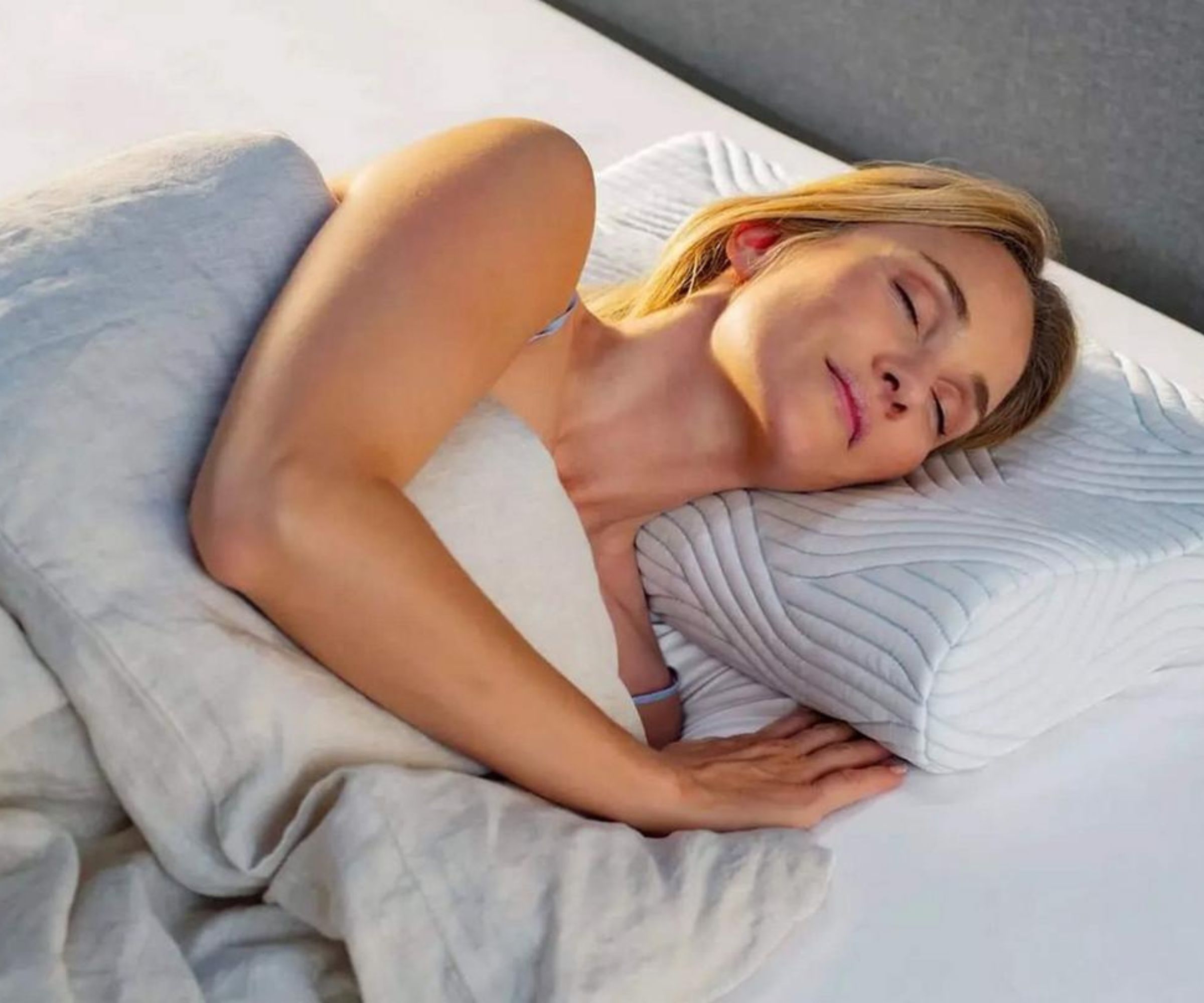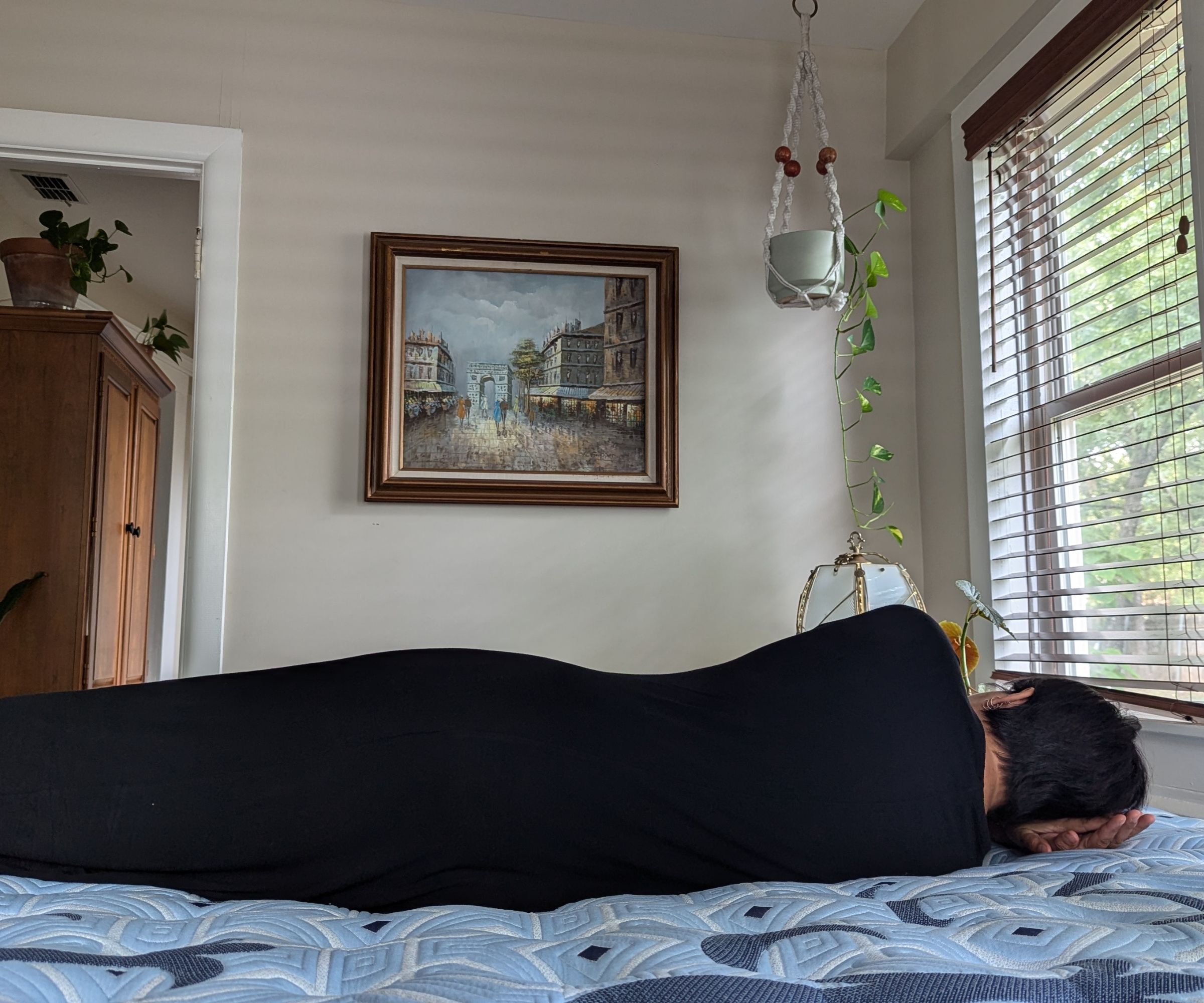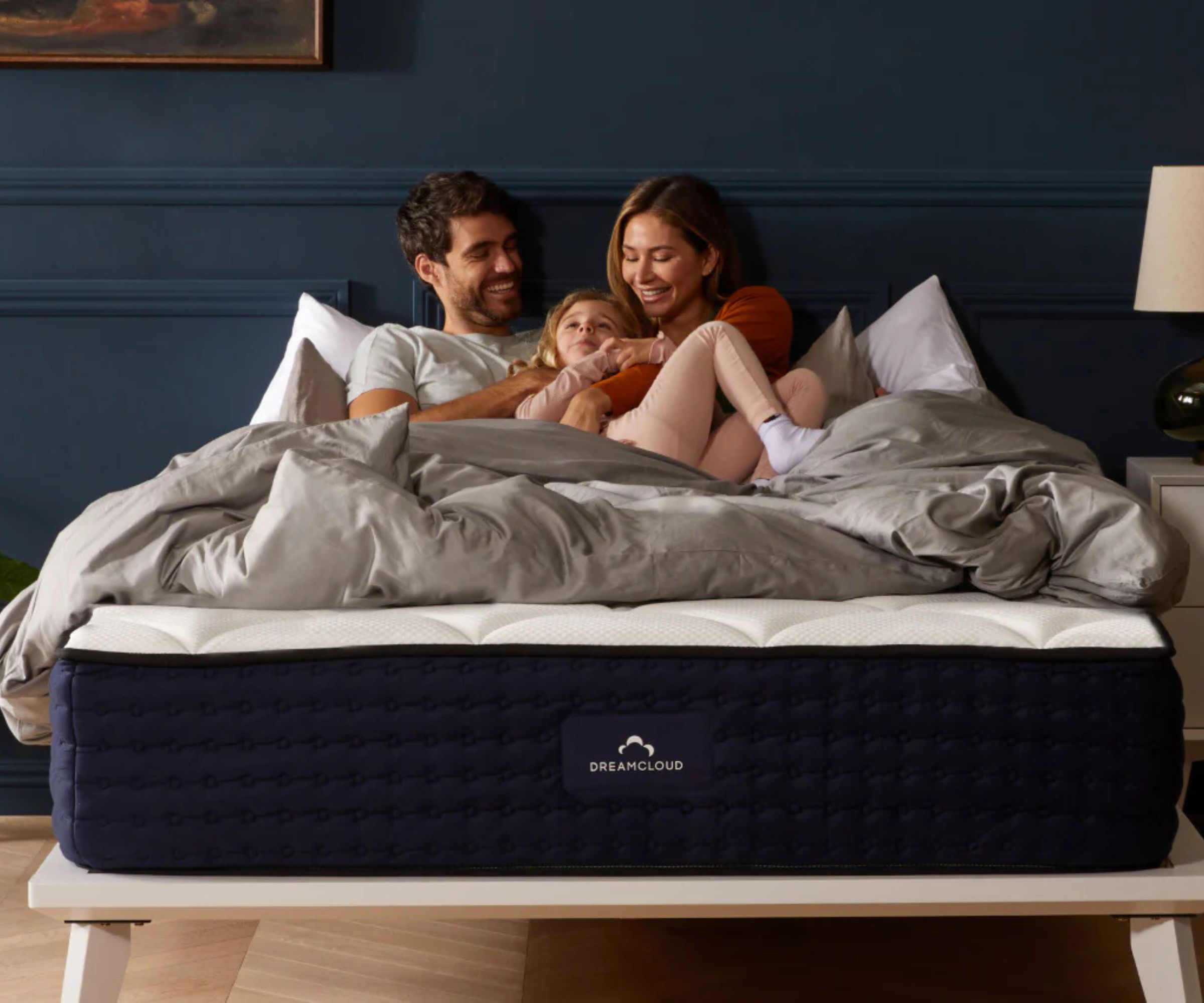Your expert guide to sleep positions – how to improve health and posture overnight
Whether you tend to lie on your stomach, back, or side impacts your spinal alignment and sleep quality, according to medical professionals and sleep scientists

Linda Clayton

The ideal sleep position promotes healthy spinal alignment from the nape of your neck to the base of your spine. You want your spine to form a straight line, without any twists at the top or bottom to put pressure on your shoulders or hips.
Whether you sleep on your stomach, back, or side makes a big difference to your sleep quality. You might find that your typical sleep position is exacerbating your snoring or heartburn. It's worth working out which sleep position is best for your bed and your body to help you get a good night's sleep.
As H&G's resident Sleep Editor, I'm often asked which sleep position is best. I rarely give two sleepers the same answer. Which sleep position feels most comfortable depends on a whole host of factors, including the current state of your mattress and whether you suffer from any health conditions. I asked my expert panel of sleep scientists and medical professionals to weigh up the pros and cons of the three major sleep positions. That way, you can learn how to sleep better without spending a cent.
Sleep positions – what yours says about you
Each bed and each body is different, so I'm reluctant to select the single best sleep position, but I can tell you the worst: sleeping on your stomach. Compared to sleeping on your back or side, it's harder to support your spine and relax your muscles when you're pressing your stomach against a firm surface. I'm a lifelong stomach sleeper, so this news hits me hard, but I'm not worried: I know I can still get good sleep with the best mattress and the best pillow.
What is the best sleeping position?

You might think that the best sleep position is the one that feels natural for you: most of us have established a preference by adulthood. When it comes to your health, though, sleep coaches believe that some positions are healthier than others.
'Sleeping on your back offers your body optimal support, while maintaining the natural alignment of your head, neck, and spine throughout the entire night,' says Dr. Guy Meadows, co-founder of Sleep School.
Sleeping on your side

According to a study by News Medical, around 54% of adults sleep on their sides. The theory goes that the flexibility of our spine decreases as we age and sleeping on our side lends some much-needed support to our hips and shoulders.
Design expertise in your inbox – from inspiring decorating ideas and beautiful celebrity homes to practical gardening advice and shopping round-ups.
Sleeping on your side promotes proper spinal alignment, creating a straight line from the nape of your neck down to the base of your spine. Side sleeping is particularly beneficial for:
- People with back pain
- People with acid reflux
- Pregnant women
- People who snore
- People with sleep apnea
- Older people
Still, side sleeping is not for everyone. If you're worried about getting wrinkles, then I'd advise you to sleep on your back instead. 'When you sleep on your side, your face is pressed against the pillow, which stretches and squashes your skin,' explains Steve Brougham, sleep expert at Harrison Spinks. 'If it's beauty sleep you're after, you want to sleep on your back. That way, you get a constant flow of air against your face without obstruction from a pillow or duvet.'
Depending on which side you tend to sleep on, you might get some soreness in your shoulders. Make sure you're sleeping on the best mattress with plenty of give and supporting your neck with a thick pillow.
Sleeping on your back

Back sleeping is the second most popular sleep position and it's the best for spinal alignment. If you suffer from back pain or neck pain, try lying on your back with a thick, squashy pillow that lets your head sink into the surface. You might find a memory foam pillow with a divot for the head does the job.
I try to sleep on my back when I have a cold. It's something my mom taught me when I was a kid: I don't know if it's a placebo effect, but it always makes me feel better. I prop myself up with two thick cushions so I'm sleeping in a more upright position. You don't want to be flat on your back, because then the nasal congestion has nowhere to go.
Back sleeping is particularly beneficial for:
- People with back pain
- People with neck pain
- People worried about wrinkles
- People suffering from a cold or allergies
Back sleeping is not recommended for pregnant women, people who snore, or heavier people: out of all the sleep positions, it puts the most pressure on your internal organs and makes it harder for blood to flow around the body.
Sleeping on your stomach

I'm a lifelong stomach sleeper. Whenever I share this with sleep scientists or mattress showroom assistants, I tend to get a disapproving look. They say that you only sleep on your stomach when you're sleeping on an overly firm mattress. Now, I've slept on my fair share of old-fashioned innersprings, so there might be some truth in this, but I think it's more to do with force of habit. I don't feel like I'm lying down unless I'm sleeping on my stomach.
Stomach sleeping has some benefits: it's been shown to relieve snoring by opening up your airways. Still, out of all the sleep positions, stomach sleeping provides the least back support and puts the most pressure on your neck, which must twist to one side or the other overnight.
In order to get a good night's sleep on your stomach, the circumstances must be just right. You need to find the right mattress firmness: firm enough to stop your hips from sinking, but not so firm that your chest gets crushed against the surface. You need a very thin pillow to avoid straining your neck.
FAQs
What is the best sleeping position for back pain?
One of the most widely recommended sleep positions for back pain is sleeping on your side with a pillow between your knees. 'Although sleeping on your side won't eradicate the pain entirely, the pillow between the knees will support the alignment of the spine and other muscles and joints in the body,' says Dr. Nerina Ramlakhan, sleep expert at Silentnight.
Osteopath Melinda Cotton recommends using your pain as a guide: 'Pain is usually telling you to try another position, so experiment to see what works for you. If you sleep on your side, sometimes one side is more comfortable than the other. Try out different positions, and if one doesn't work for you, then it is not right for your body at this moment in time.'
What is the best sleeping position for neck pain?
Sleeping on your back with the best pillow at the right height for your shoulders should keep your body in a neutral, natural position from head to toe.
If you sleep on your side, then you need a medium-firm pillow that is thick enough to fit into the gap between your head and your shoulder. You might also consider a knee pillow to help align the hips and stop your torso from twisting.
If you suffer from neck pain, then you should try to avoid sleeping on your stomach. This position puts strain on your neck, which is forced to one side, and can result in numbness and tingling due to trapped nerves. You should try to sleep with a thin, flat pillow, or perhaps no pillow at all, and consider placing a pillow beneath your pelvis to keep your spine aligned.
What is the best sleep position for sciatica?
Osteopath Melinda Cotton, who has suffered with sciatica following a disc injury, says that 'you need to listen to your body to find the best position for you. Try various positions, with and without pillows.'
Don't worry if you have to move around. 'When we don't move, inflammation builds up and pain increases,' explains Melinda. 'Having to move around in the night is common until the cause of the sciatica begins to resolve and inflammation decreases.'
What is the best sleep position for pregnancy?
Most experts agree that sleeping on your left side provides optimal circulation and nourishment for your growing baby.
'Sleeping on your back is not ideal,' cautions Lucy Shrimpton, sleep expert and founder of The Sleep Nanny, 'especially as your bump grows and the pressure increases on your liver and your major blood vessels.' Lucy recommends using a pregnancy pillow or body pillow to separate the knees and support the bump, which helps to keep the spine aligned.
Still, try not to worry too much about adopting the perfect position. 'If you're comfortable, you're most likely to be in a perfectly suitable sleeping position,' says Lucy. 'If the position is not good for you or your baby, then your body will let you know.'
The best sleep position is whichever one feels most comfortable for you. Even stomach sleeping can be healthy if you find the right mattress and pillow to support your body. If you're worried that your sleep position might be having a detrimental effect on your health, then it's worth consulting with a medical professional to get advice that's tailored to you.

Emilia is our resident sleep writer. She spends her days tracking down the lowest prices on the best mattresses and bedding and spends her nights testing them out from the comfort of her own home. Emilia leads a team of testers across America to find the best mattress for every sleep style, body type, and budget.
Emilia's quest to learn how to sleep better takes her all around the world, from the 3Z mattress factory in Glendale, Arizona to the Hästens headquarters in Köping, Sweden. She's interviewed luxury bedding designers at Shleep and Pure Parima, as well as the Design Manager at IKEA. Before she joined Homes & Gardens, Emilia studied English at the University of Oxford.